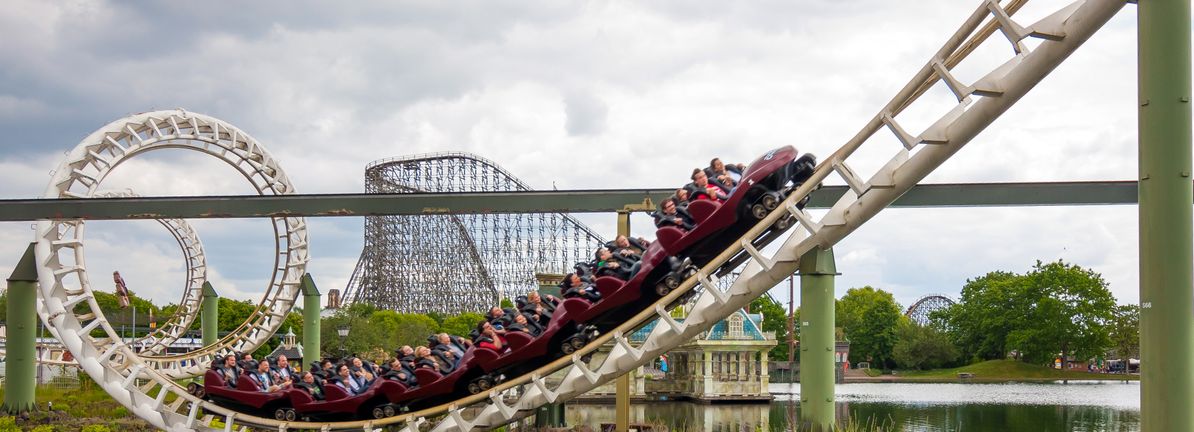Tech
Review: Mario & Luigi: Brothership (Switch) – Easily The Best Mario & Luigi RPG Yet

As the very first Mario & Luigi RPG to be released on a full-fat home console, we’ve been champing at the bit to discover whether or not Nintendo would capitalise on the extra grunt of the Switch to serve us up the biggest and best turn-based Bros. romp yet in the form of Mario & Luigi: Brothership.
We had some concerns during our preview. As much as we love the new graphical stylings and flashy additions to the series’ core combat, early areas were rather small-scale and not quite as challenging or inventive as we’d been prepping for. However! Fear not intrepid explorers, for more alluring high-seas hijinks, as it turns out, were waiting just around the corner. They have corners at sea, right?
As you’ll know by now, Mario & Luigi: Brotherhood sees everyone’s favourite plumbers take on the challenge of reconnecting the fragmented land of Concordia, where the entire Mario gang — and a bunch of other Mushroom Kingdom tag-alongs — find themselves after a mysterious warping incident. We’ve all been there.

And so our dynamic duo proceeds to fire themselves willingly from a great big yellow cannon aboard the game’s delightful Shipshape Island hub in order to deal with an ever-growing menace. It seems the denizens of Concordia are being struck down by a gloomy illness, one that makes them feel like being alone, like disconnecting from everyone and everything around them.
It’s all about connecting in Concordia, you see, and Mario and Luigi now need to travel to each fragmented land to reconnect the world in its entirety, whilst also defeating the big bad at the heart of what’s gone wrong. We really can’t give too much away as there are lots of bits and bobs we can’t talk about, but the adventure that follows has genuinely surprised us with its scale and scope, as well as in terms of its challenge and, yes, that all-important variety.
Those already familiar with the turn-based combat of the series will immediately find themselves at home here, but we’ve now got a system of attack and defence that drills down into the whole connection and Brothership motif of the game, making you work together more than ever before to get the job done. The series has always had you command each brother to jump and attack on separate buttons — it’s the beating heart of the whole thing — but now these sequences of attack and defence have been fleshed out, making for incredibly rewarding combat that never really grows old.

In attacking; jump and hammer assaults make up the backbone of what you’re doing, with each bro playing their part as you rhythmically press buttons to have them smash their hammers as hard as they can, or get the most air possible in their jumps for maximum damage. Then, on defence, you’ll need to figure out the timings of enemy attacks (of which there are many) in order to dodge and counter incoming shots.
On top of this, we then add Bros. moves, big fancy upgradeable specials that see you work together to fire off red and green shells (and a bunch of other stuff we are not allowed to reveal), as well as an all-new Battle Plug system that adds a ton of strategy to an already engaging system.
Plugs initially seem like a fairly standard way to allow you to add little boons and boosts, stuff like extra defence to help out in a tricky scrap or added AOE damage on a jump. It’s how far this plug system then develops out, though, that really gives the game the kick it needs to rise above all previous entries.

Once you start getting a little further into the campaign, Battle Plugs become more interesting, giving you the ability to automate healing and BP potions so you don’t have to factor them into turns, preventing elemental damage, dropping surprise iron balls, and more. Then it introduces the ability to mix plugs together, resulting in stuff like loot boosts, anti-air specialisations, and a bunch of things we haven’t even managed to unlock yet after a solid 40+ hours of playing. Yep, this is a big old game, and it’s got depth.
Battle Plugs also allow you to adjust certain parameters of the game’s difficulty on the fly, in effect. You can take a bunch of the sting out of enemy shots, automate dodges and counters, and those auto-healing and potions give you a big advantage. If things are still too tough, or you just want to chill to the max, the difficulty can be dropped right down to a story-focused mode that makes our protagonists unstoppable tanks in battle.
Further to Battle Plugs, you’ve also got Luigi Logic moments. You’ll already know from our preview that Luigi’s moments of inspiration are used during exploration to bust open boxes, press switches, and so on — again, this aspect is also fleshed out in lots of fun ways — but it can also be used during boss battles for some very fun, big moments. Get to certain checkpoints during a boss fight and some environmental detail will grab Luigi’s attention, leading to the chance to do big damage that can change the flow of a fight.

All of this stuff makes for a bright and busy, comedy-infused combat system that’s a genuine blast to dig into, one that’s enhanced by a roster of excellent enemies (there’s so much fun stuff around how the enemy varieties switch up later in the game), and an art style which makes for the most emotive video game iteration of Bros. we’ve seen. There’s so much detail and expression in how this pair carry out attacks now, in how they dodge incoming shots by the skin of their teeth, and sweat and panic at the thought of what’s next. Luigi, in particular, with his awkward landings and anxious demeanour is a constant source of joy.
It all fits snugly into this whole idea the game’s got of connecting on a more meaningful level, and we get to connect that little bit more to the characters of Mario and Luigi thanks to the OTT expressions that the old-school, anime style the devs have chosen here gives us.
And so, the only piece of the puzzle that’s left now, is the actual world of Concordia itself and, as it turns out, that’s the best, and most surprising part of the whole thing.
We genuinely were a tad concerned after completing the first area of the impressively large ocean world. The islands that we visited were fun and colourful, for sure, but at that early stage it was all a little samey and safe. Thank goodness, then, that as Concordia opens up, as you discover new sailing routes whilst blasting around at full speed aboard Shipshape (a fun little reef-spotting minigame in and of itself), Mario & Luigi: Brothership 100% ups the ante and serves up a world that constantly gives us new mechanics, environmental obstacles, twists and turns.

The islands and islets (mini challenge areas!) that you map out as you sail around begin to take on a Mario Galaxy-lite feel. Of course, there’s no full-on platforming or anything like that, but the differing gimmicks, wildly different environs, and fun things to do outside of combat make for a world and a story that you’ll absolutely want to push on to see in its entirety. From rolling around on timed platforms as a great big Mario Bros. ball to changing the weather from hot to cold in an instant to kill foes, there’s always some new thing to do. Smashing up paths, diverting lava flows, working closely with electricity (the citizens of Concordia are little plug sockets, after all) – there’s so much variety to keep you fully plugged in.
Side missions can be taken on at your leisure from the various NPCs you meet, and these open up the replayability factor that emerges from revisiting islands when you’ve connected them to Shipshape. Once you’ve hooked them into your hub, you can return to find new paths opened up, new areas to visit, and challenges to complete. There’s also a whole bunch of collectibles to find, of course, and nabbing everything that pops up on your map and getting to all the good gear and secrets takes a whole lot of working together to figure out the tricks behind islands that are uniformly well-designed.

Added to this constantly evolving creativity, we get a story that actually goes some places, writing that keeps the comedy aspects of this series alive and well, and a menagerie of bosses that keep the wacky challenges coming. We should also mention that there are some in-built achievements to set about completing, which is always a big bonus for us absolutely terrible cheevo fans.
There are a couple of negative points to mull over. If you don’t like random encounters of the old-school, turn-based RPG nature, well, there’s a whole lot of that going on. You can flee 90% of them without trouble, but there’s no easy or slick way to avoid these battles as the game is more focused on whether you or your enemy strike first for a foot-up.
Gear too, is fun in its naming and there are plenty of cool items to find, but we can’t help but feel it’s a missed opportunity not to allow us to change our appearance a little. Boots, overalls, and gloves that all look the same is just…it’s a bit bland, innit. We get it, and we know why it is how it is, but the fun we could have here with gear that changes how you look! Maybe next time?

Apart from these minor issues though, and with performance in both docked and handheld that is decent apart from the odd minor wobble in busy areas, what we’ve got here is easily the best Mario & Luigi RPG yet. The combat is on point, the worldbuilding is impressive throughout, platforming and puzzles are clever, and it’s got variety in spades. Nintendo just seems to keep finding ways to squeeze more and more magic out of this seven-and-a-half-year-old console. You love to see it.









